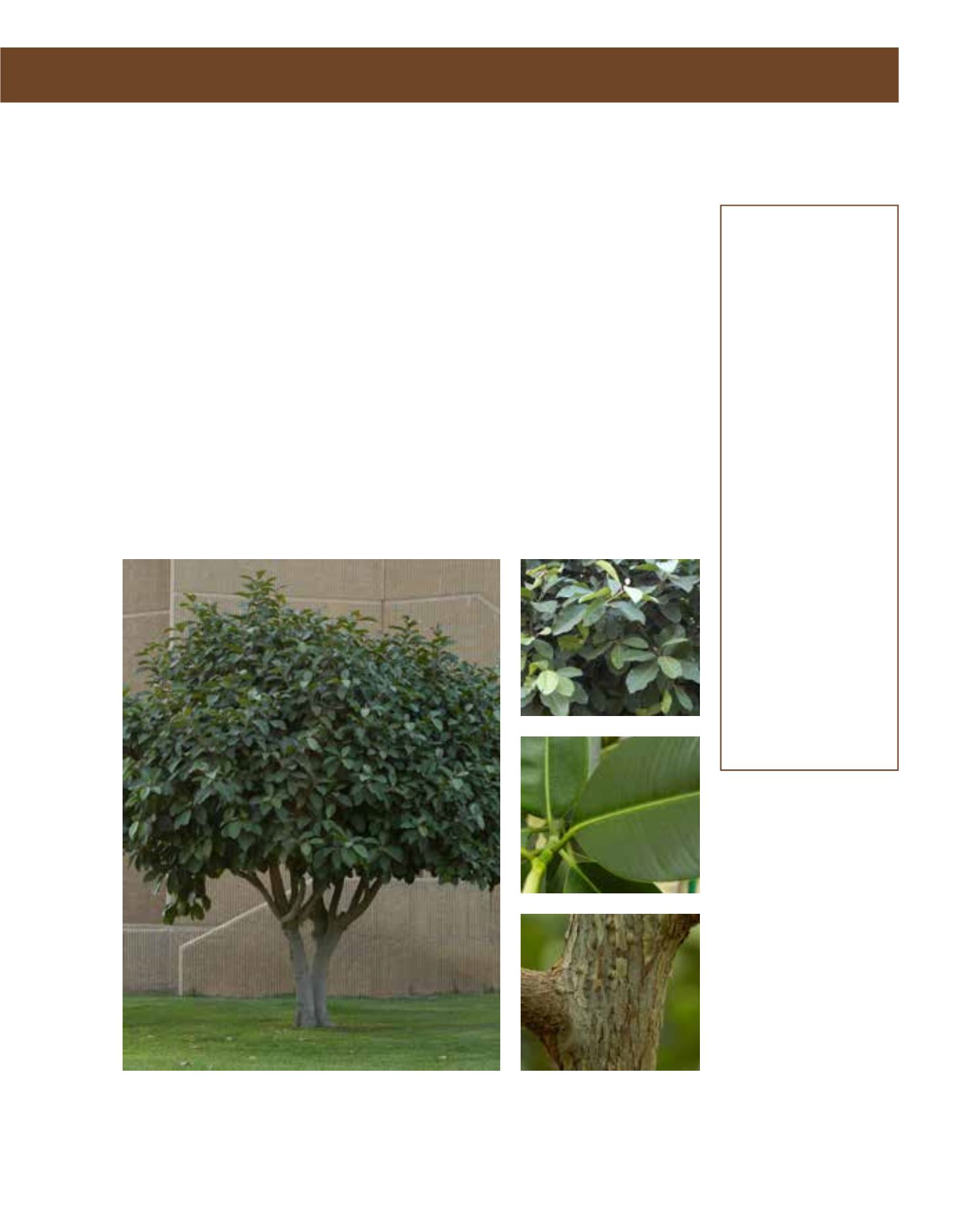

GENERAL
Origin
:
Mediterranean,
sub-tropical,
tropical
Vigour
:
fast growing
Humidity
:
semi-humid, very
humid, extremely
humid
Propagation :
cuttings, aerial
layering
Maintenance :
moderate
CONDITIONS
Urban climate :
resistant
Dessication :
vulnerable
Stagnant water :
vulnerable
Irrigation
:
high
Salinity/ppm :
moderate (3000
ppm)
Hardiness
:
-3°C
SHAPE
Type
:
tree
Height
:
6 m-30 m
Spread
:
8 m-15 m
Foliage
:
evergreen
FLOWER
Colour
:
pale yellow
Size
:
0.2 cm
Period
:
March - April
FRUIT
Type of fruit :
drupe(fleshy/
juicy)
Fruit size
:
2 cm
Toxicity
:
inedible, fruit
The Rusty Fig, native to Australia, is a broad, densely shading, evergreen tree that may reach
30 metres in height, spreading up to 15 metres when mature, making huge specimen trees. It also
often makes an attractive multi-trunked tree. Rather slow-growing, a buttressed trunk is eventu-
ally formed, which can reach 1.5 metres in diameter: the bark has a yellow-brown colour. Its ovate
to oval-shaped leaves are 6–10 cm long: the brown, short fuzz and rusty colour of the undersides
of the leaves give the tree its name. The inedible figs ripen from yellow to red. In humid climates,
the lower branches of the tree form aerial roots. F. rubiginosa tolerates many types of soil, even
where compacted and poorly draining, and will grow well under arid conditions. It prefers full
sun, but also grows in partial shade; regular irrigation is required in summer, less in winter.
Once established, it can withstand short periods of drought and frosts, and withstands more cold
in Arriyadh than other Ficus species. It is easily propagated by cuttings or aerial layering. Scale
insect may become a problem. F. rubiginosa is an excellent ornamental tree; however, it can be
planted only in very large private gardens, owing to its aggressive root system, which can damage
underground pipes and foundations. It makes a very good shade tree in parks and is tolerant of
urban microclimates. It is also a valuable plant for wildlife. Trees should be carefully pruned from
the outset to create a good structure: by removing some branches an open form can be achieved.
152
Ficus rubiginosa,
Moraceae
Rusty Fig,
Rustyleaf Fig
















